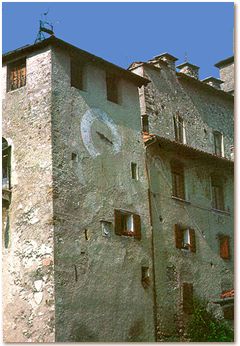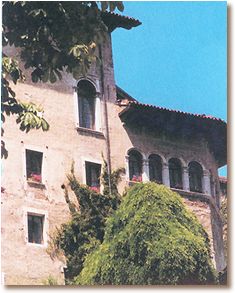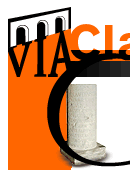|
 urrent
excavation works will help the Archaeology Office for Veneto to
solve any doubt on the topography of the ancient Feltre. After the
Roman age, Feltre has been sacked several times by the Barbarians
and pushed towards the Forum Romanum, near the fortress. Under the
bishops' control and the Earls of Feltre's (Earls of Feltre and
Belluno starting from 1204, whose common aim was the fight against
the trevigiani) it included also the Primiero and the Sugana valleys
in its territory. It was later on taken over by the families da
Romano, da Camino, Scaligeri and Visconti up to 1404 when the town
offers itself to Venice. This anniversary is celebrated every year
during the first week-end of August through the famous Palio. The
4 boroughs of the town, through a parade of historic costumes, compete
for 15 golden ducats (the reward for the first celebration of the
devotion to the Serenissima Republic urrent
excavation works will help the Archaeology Office for Veneto to
solve any doubt on the topography of the ancient Feltre. After the
Roman age, Feltre has been sacked several times by the Barbarians
and pushed towards the Forum Romanum, near the fortress. Under the
bishops' control and the Earls of Feltre's (Earls of Feltre and
Belluno starting from 1204, whose common aim was the fight against
the trevigiani) it included also the Primiero and the Sugana valleys
in its territory. It was later on taken over by the families da
Romano, da Camino, Scaligeri and Visconti up to 1404 when the town
offers itself to Venice. This anniversary is celebrated every year
during the first week-end of August through the famous Palio. The
4 boroughs of the town, through a parade of historic costumes, compete
for 15 golden ducats (the reward for the first celebration of the
devotion to the Serenissima Republic 
|
 |

 he
town reached its highest splendour during the Venetian domination
up to 1509 when during the Cambrai war it was sacked by the Hapsburg
troops and razed to the ground in 1510. Its rapid reconstruction
is proved by an old town centre featuring a typical 16th-century
architectural structure. After the fall of the Venetian republic
in 1797, Feltre was taken over by the French (most tombstones were
destroyed or lost during this period in order to overshadow the
Venice record), then by the Austrians, later annexed to the Regno
Lombardo Veneto up to 1866, year of the foundation of the Regno
d'Italia. he
town reached its highest splendour during the Venetian domination
up to 1509 when during the Cambrai war it was sacked by the Hapsburg
troops and razed to the ground in 1510. Its rapid reconstruction
is proved by an old town centre featuring a typical 16th-century
architectural structure. After the fall of the Venetian republic
in 1797, Feltre was taken over by the French (most tombstones were
destroyed or lost during this period in order to overshadow the
Venice record), then by the Austrians, later annexed to the Regno
Lombardo Veneto up to 1866, year of the foundation of the Regno
d'Italia.

|






![]() Local
Traditions
Local
Traditions ![]() Local
Traditions
Local
Traditions 


